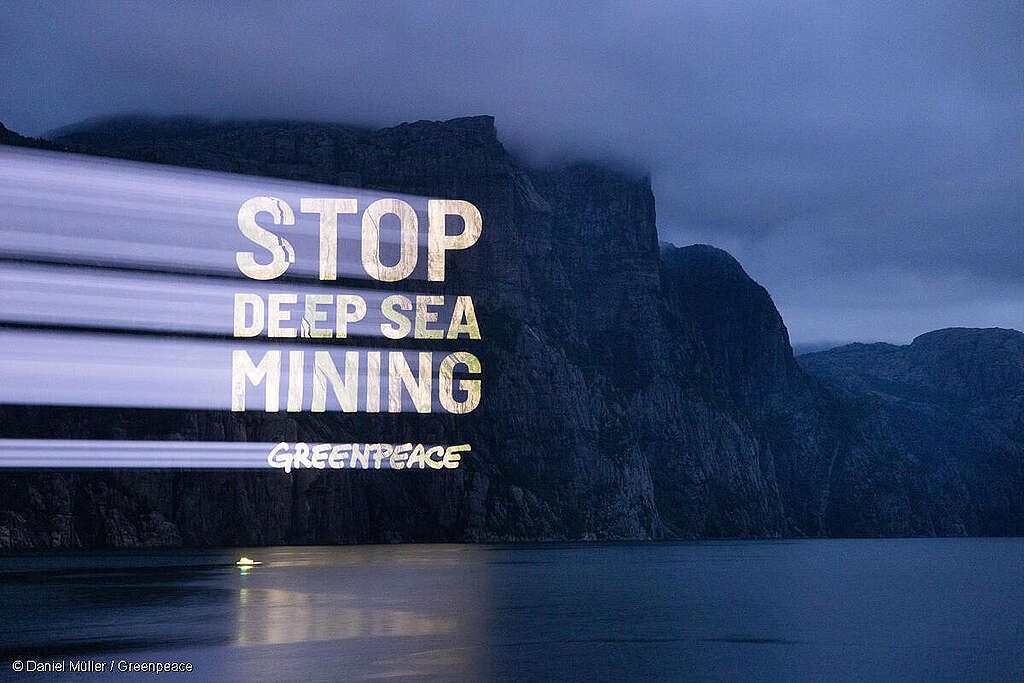
PETITION: Stop Deep Sea Mining
An emerging new industry could destroy this fragile and unique deep sea environment before we truly understand its importance.
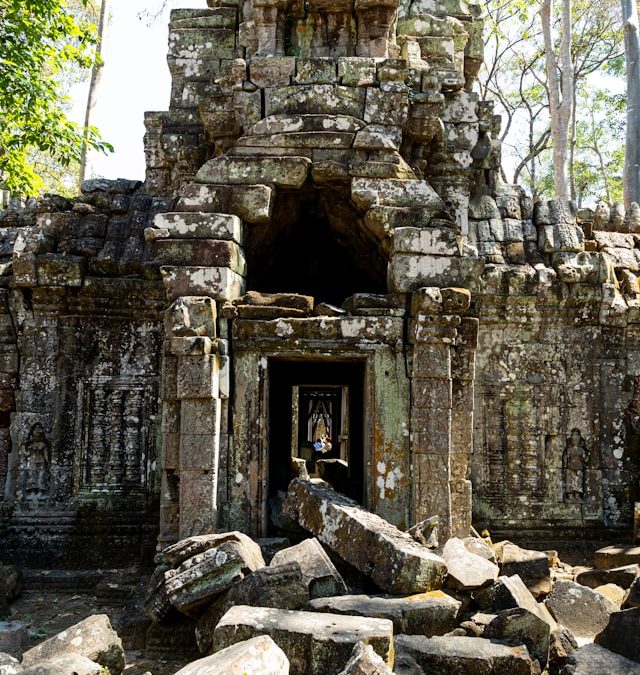
Editor’s note: This article is an update from a year ago. Trying to fix the climate change planetary boundary at the expense of biodiversity or any of the other planetary boundaries is a fool’s errand. This article does not state the fact that it only takes one planetary boundary to collapse to cause a massive die-off of life on the planet. Plus no mention of the poly-crisis of nuclear war, increasing inequality, AI and global economic crash.
Turning and turning in the widening gyre
The falcon cannot hear the falconer;
Things fall apart; the centre cannot hold;
Mere anarchy is loosed upon the world,
The blood-dimmed tide is loosed, and everywhere
The ceremony of innocence is drowned;
The best lack all conviction, while the worst
Are full of passionate intensity. – The Second Coming William Butler Yeats in 1919
By Edward Carver writer for Common Dreams
Six of nine planetary boundaries have already been transgressed, and a seventh, for ocean acidification, is on the verge of being breached, according to a major report released Monday.
The 96-page report, produced by the Potsdam Institute for Climate Impact Research (PIK), is the first in a planned series of annual “planetary health checks.”
The authors found that safe planetary boundaries had already been crossed for the climate, freshwater, land use, biogeochemical flows, novel entities, and biosphere integrity—in keeping with a study in Science Advances last year. They found a “clear trend towards further transgression”—moving deeper into the danger zone, where irreversible tipping points are more likely to be triggered—in each of the six categories.
“Our updated diagnosis shows that vital organs of the Earth system are weakening, leading to a loss of resilience and rising risks of crossing tipping points,” Levke Caesar, a PIK climate physicist lead author of the report, said in a statement that announced a “red alert.”
The health check also showed that ocean acidification, a seventh category, has reached a dangerous precipice, putting the foundations of the marine food web at risk. Ocean acidification, which can threaten coral reefs and phytoplankton populations, is caused by the buildup of carbon dioxide from burning fossil fuels and other human activities.
Caesar said a “safe operating space” threshold for acidification could be crossed in the next few years.
“Looking at the current evolution, I’d say it’s really, really difficult to prevent that [boundary] crossing,” she toldMongabay.
A graphic shows the status of nine environmental categories, four of which have been broken down into two control variables. Image from Planetary Health Check 2024. Design by Globaïa.
PIK director Johan Rockström, a co-author of the new report, helped develop planetary boundary research in the late 2000s. In a seminal 2009 paper in Nature, he and his co-authors found that three of the nine boundaries had already been crossed. That number has gradually gone up based on a series of studies over the last decade.
The planet boundary framework, which is often connected to the degrowth movement, emphasizes that the categories are interconnected.
“The interconnectedness of [planetary boundary] processes means that addressing one issue, such as limiting global warming to 1.5°C, requires tackling all of them collectively,” the new report says.
Boris Sakschewski, a climate scientist who, along with Caesar, is a lead author of the report said that, “We know that all planetary boundary processes act together and each one needs protection to protect the whole system.”
The consequences of continued ocean acidification, which is primarily measured by aragonite saturation, would be severe, the report warns.
Ocean acidification is approaching a critical threshold, with significant declines in surface aragonite saturation, particularly in high-latitude regions like the Arctic and Southern Ocean. These areas are vital for the marine carbon pump and global nutrient cycles, which support marine productivity, biodiversity, and global fisheries. The growing acidification poses an increasing threat to marine ecosystems, especially those reliant on calcium carbonate for shell formation.
Some researchers believe that the ocean acidification threshold has already been crossed, especially given regional variability, with cooler polar waters absorbing more carbon dioxide, causing a faster drop in pH levels.
The report was written with a general audience in mind and is not peer-reviewed, though it’s based on peer-reviewed studies, the authors said.
The final pages of the report present solutions, especially agricultural. A radical overhaul of the global food system, heavily dependent on fertilizer and other harmful inputs, will be necessary to reverse the disturbing trends documented in the report, the authors wrote.
“Sometimes overlooked compared to the impacts of energy production and consumption—particularly the use of fossil fuels—the food systems we depend on are among the largest drivers of environmental degradation. The global food system is the single largest driver behind the transgression of multiple planetary boundaries,” the report says.
Photo by Robin Canfield on Unsplash
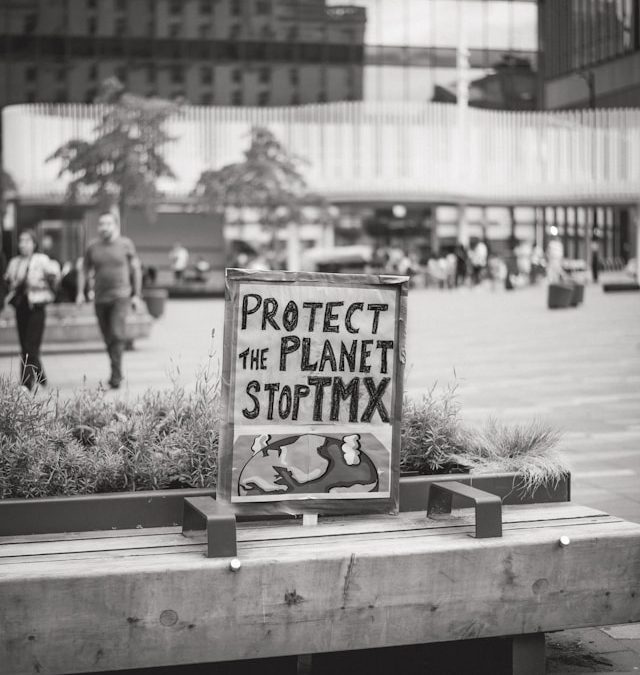
By Olivia Rosane, staff writer for Common Dreams.
Almost 200 people were killed in 2023 for attempting to protect their lands and communities from ecological devastation, Global Witness revealed Tuesday.
This raises the total number of environmental defenders killed between 2012—when Global Witness began publishing its annual reports—and 2023 to 2,106.
“As the climate crisis accelerates, those who use their voice to courageously defend our planet are met with violence, intimidation, and murder,” Laura Furones, the report’s lead author and senior adviser to the Land and Environmental Defenders Campaign at Global Witness, said in a statement. “Our data shows that the number of killings remains alarmingly high, a situation that is simply unacceptable.”
At least 196 people were murdered in 2023, 79 of them in Colombia, which was both the deadliest country for defenders last year and the deadliest overall. In 2023, more defenders were killed in Colombia than have ever been killed in one country in a given year since Global Witness began its calculations.
While the government of left-wing President Gustavo Petro has promised to protect activists, organizers on the ground say the situation has only gotten worse for defenders in the past year. Colombia will host the 16th Conference of Parties to the Convention on Biological Diversity in October and has promised to highlight the role of defenders in protecting nature. This presents a “historic opportunity” to stand up for the rights of environmental activists, Global Witness said.
Overall, Latin America is the deadliest region for defenders, making up 85% of killings in 2023. It was home to the four deadliest countries for defenders—Colombia, Brazil, Honduras, and Mexico—which together accounted for 70% of all killings. Honduras also saw the highest number of killings per capita, both in 2023 and over the past 11 years.
“It is the job of leaders to listen and make sure that defenders can speak out without risk.”
The fifth deadliest country for defenders in 2023 was the Philippines, which saw 17 people killed. Overall, nearly 500 people have been murdered in Asia since 2012, with the Philippines remaining the deadliest country in the region during that time. Global Witness recorded four deaths in Africa in 2023, and 116 since 2012, but noted that this is likely a “gross underestimate” as killings on the continent are more difficult to document due to a lack of information.
Global Witness cannot always link a particular industry to the murders of the land defenders who oppose environmental harm. In Colombia, for example, it estimates that half of people killed in 2023 were killed by organized criminal elements. However, for the deaths it was able to connect, most people died after opposing mining operations at 25. This was followed by logging (5), fishing (5), agribusiness (4), roads and infrastructure (4), and hydropower (2).
The threat of even more mining-related violence looms as nations scramble for the critical minerals necessary for the transition away from fossil fuels and toward renewable forms of energy. This dovetails with another component of Global Witness’ findings: the disproportionate violence borne by Indigenous communities for defending their homes. Of the defenders killed in 2023, nearly half were Indigenous peoples or Afro-descendants, and almost half of the minerals needed for the energy transition are located on or near Indigenous or peasant land.
Jenifer Lasimbang, an Indigenous Orang Asal woman from Malaysia and executive director of Indigenous Peoples of Asia Solidarity Fund, explained the situation her community faces:
In Malaysia, as in many other countries, we Indigenous Peoples have been subject to wave after wave of destruction. First came the logging and oil palm companies. As a result, nearly 80% of the land surface in Malaysian Borneo has been cleared or severely damaged.
Now, as the world moves away from a fossil-fuel based economy, we’re seeing a rush for critical minerals, essential to succeed in the transition to a green economy.
With Malaysia the regional leader in aluminium, iron and manganese production, extracting rare minerals isn’t new to us. But our experience so far has been that this comes at a huge environmental cost.
The Malaysian government is issuing an increasing number of prospecting and mining licenses. We know what this new “green rush” means for us. We know it’s going to get worse while demand for resources remains high.
Lasimbang said that her community did not oppose development itself, but an “unsustainable and unequal global system” predicated on ever-increasing consumption, and that world leaders should learn from Indigenous communities like hers how to sustain a society without destroying the environment.
“There is only really one thing left to say: Trust us. Let us lead. We will take you with us,” Lasimbang said.
While global awareness of the climate crisis and commitments to address it should have translated into greater protections for those on the frontlines of defending biodiversity, that has not been the case. Since the Paris Agreement was signed in 2015, at least 1,500 defenders have been murdered, Global Witness said.
Even in wealthier countries like the U.K., E.U., and the U.S. where killings are less frequent, governments have increasingly repressed environmental activists by criminalizing protests. In 2023, Global Witness observed that the “global surge in anti-protest legislation persisted.”
For example, in 2023 the U.K. expanded its Public Order Act to allow police to prosecute certain protests that disrupted national infrastructure or caused “more than a minor” disturbance. In November of that year, police arrested at least 630 people for marching slowly on a public road to protest new fossil fuel projects.
In the U.S., more than 20 states have passed “critical infrastructure” laws that target protests against fossil fuel projects like pipelines. E.U. countries have passed similar laws as well.
Even in the developed world, the criminalization of protest can turn deadly: In January 2023, police in Georgia shot and killed 26-year-old defender Manuel Esteban Paez Terán, or Tortuguita, as they were camping out in a local forest to prevent it from being bulldozed to facilitate the construction of a “Cop City” training facility.
To protect defenders worldwide, Global Witness called on governments and businesses to document attacks and hold perpetrators to account.
“Governments cannot stand idly by; they must take decisive action to protect defenders and to address the underlying drivers of violence against them,” Furones said. “Activists and their communities are essential in efforts to prevent and remedy harms caused by climate-damaging industries. We cannot afford to, nor should we tolerate, losing any more lives.”
Nonhle Mbuthuma of South Africa, who won the Goldman Environmental Prize in 2024, wrote in the report’s forward that both defenders and governments had a role to play in creating a more just and sustainable world as it teeters on the brink of climate and ecological breakdown.
“Now it is my role, as a defender, to push elite power to take radical action that swings us away from fossil fuels and toward systems that benefit the whole of society,” Mbuthuma wrote. “It is the job of leaders to listen and make sure that defenders can speak out without risk. This is the responsibility of all wealthy and resource-rich countries across the planet.”
Photo by Albert Stoynov on Unsplash

By Katie Singer https://katiesinger.substack.com/p/bess-fire-hazards
On Friday, August 30, Applied Energy Services Corporation (AES), a global utility and power generation company, submitted a proposal to Santa Fe, New Mexico county commissioners to build a 700-acre solar facility with a battery energy storage system (BESS).
On September 5th, a thermal runaway fire started at the AES-built SDG&E (San Diego Gas and Electric) Battery Storage Facility in Escondido, California. (With a thermal runaway fire, excessive heat causes a chemical reaction that spreads to other batteries.) Authorities issued a mandatory evacuation order for the immediate area, and a “shelter in place” order for areas as far as over a mile away from the fire. (To shelter in place, people must go indoors, shut doors and windows, and “self-sustain” until emergency personnel provide additional direction.) Schools up to three miles away from the fire were evacuated Thursday and canceled for Friday. 500 businesses closed.
As of this morning, Saturday, September 7th, officials have not yet lifted orders to evacuate and shelter in place.
On social media, people have reported smelling “burning plastic” inside their homes (despite windows being closed) and feeling ill.
People from Oceanside to Encinitas encountered a strong chemical smell starting around 5 pm Friday, the 6th. Around 8:30 pm, San Diego County Air Pollution Control District officials said that this smell was not related to the BESS fire in Escondido. Due to the odors’ fleeting nature, they were unable to identify its source.
This is the 3rd AES BESS thermal runaway fire in five years. Officials predict that it could take up to 48 hours to extinguish.
A May 2024 battery fire in Otay Mesa, California kept firefighters on the scene for nearly 17 days. They sprayed eight million gallons of water on the site. The county’s hazmat team tested water runoff and smoke and reported no toxic or dangerous levels. (Is the keyword in this last sentence “reported?”)
For a list of battery energy storage “failure incidents,” see Electric Power Research Institute’s database. Globally, 63 utility and industrial-scale battery energy storage systems endured failure events from 2011 to 2023. After South Korea, the U.S. has experienced the most major battery energy storage-related fires, with California (six, with this Escondido fire) and New York (four) reporting the most incidents.
Back in Santa Fe County, petitioners emailed and hand-delivered a request to county commissioners on July 23 and August 23 to enact a moratorium on AES’s solar facility and battery energy storage system. Commissioners did not review these petitions before AES submitted its application on August 30th. A moratorium cannot apply to a pending application.
AES’s Escondido Battery Energy Storage facility has 24 BESS battery containers. The corporation plans to install 38 battery containers at its Rancho Viejo BESS facility.
For updates, visit New Mexicans for Responsible Renewable Energy.
Please also read my September 5th post, 21 questions for solar PV explorers, and check out Shauna and Harlie Rankin’s video, “Government announces 31 million acre land grab from U.S. ranchers (for solar and wind facilities).” It explains that federal officials and corporations have joined forces to install “renewable power” corridors—five miles wide, 70 miles long, and larger—around the U.S. by 2030. These corridors will cover farm and ranchland with solar and wind facilities.
I also highly recommend Calvin L. Martin’s August 2019 report, “BESS Bombs: The huge explosive toxic batteries the wind & solar companies are sneaking into your backyard.” Part 1 and Part 2. I recommend reading this report even though powers-that-be removed its videos.
According to basic engineering principles, no technology is safe until proven safe. Will legislators continue to dedicate billions of dollars to subsidizing solar power, wind power, battery storage and EVs? Will commissioners and regulators say, “We have to expect some thermal runaway fires in order to mitigate climate change threats?” Or, will they build safety features into BESS like this firefighter suggests? Will they protect the public and insist on certified reports from liability-carrying professional engineers that all hazards have been mitigated before they permit new facilities and new battery storage systems?
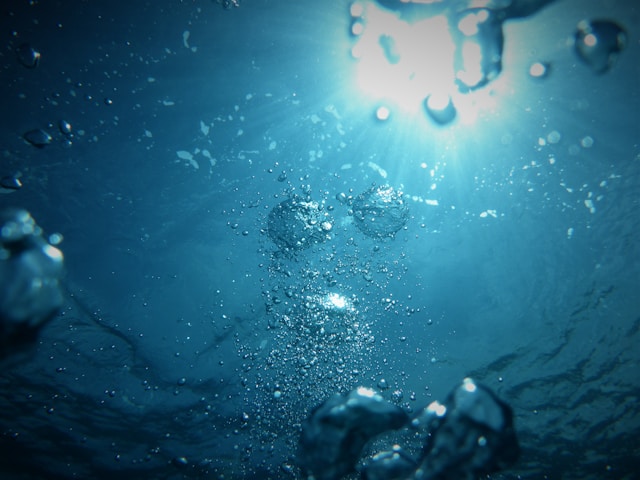
Nick Young 26 July 2024 / Greenpeace Scientists have found a source of ‘dark oxygen’ 4,000 meters below the surface of the Pacific in the target zone for deep sea mining. The discovery could have far-reaching implications for science and the wannabe deep sea mining industry. It’s often said that we know more about the surface of the moon than we do about the deep ocean. This new discovery of dark oxygen shows how true that is, and underlines the need to stop a new deep sea mining industry from targeting its source.
What scientists mean by ‘dark oxygen’ is that – in the total darkness of the very deep ocean – around 4,000 meters below the surface of the Pacific Ocean – oxygen is being produced – in the dark.
It’s previously been thought that oxygen on Earth is produced on land and at the surface of the ocean, where sunlight makes plant photosynthesis possible.
Plants on land are the biggest producers of oxygen, but marine algae and phytoplankton also produce it. These microscopic organisms perform photosynthesis in the ocean, which covers about 70% of the Earth’s surface.
Blue-green algae – or cyanobacteria – are some of the oldest organisms on Earth and can also produce oxygen. They were among the first to do so through photosynthesis, and they also need sunlight.
The common factor in oxygen production is sunlight – until this discovery of dark oxygen showed that oxygen is also being produced in another way in the deep dark sea.
The dark oxygen discovery is being hailed as a groundbreaking scientific discovery, but it also has other implications.
Nick Owens, the director of the Scottish Association for Marine Science (SAMS) says: “The fact that we’ve got another source of oxygen on the planet other than photosynthesis has consequences and implications that are utterly profound.”
Andrew Sweetman, who was one of the SAMS scientists involved in the research, says in a video: “This research potentially sheds light on where life began on the planet. This discovery has shown that, well, maybe there was another source of oxygen a long time ago and aerobic life or life that breathes oxygen could have persisted before the rise of photosynthesis — and if it’s happening on our planet could it be happening on other planets too?”
But as well as those wider implications, the discovery has significant and immediate implications for the controversial deep sea mining industry which somewhat ironically sponsored the science.
Here’s the thing. This dark oxygen, instead of being produced by plants and sunlight, is being produced by strange potato-shaped metallic lumps found on the deep sea floor.
It turns out that these lumps – otherwise known as ‘polymetallic nodules’ – give off almost as much electricity as AA batteries! By reacting with salt water, their electrical charge produces oxygen way down there on the seabed of the deep ocean through a process known as ‘seawater electrolysis’ which splits seawater into hydrogen and oxygen.
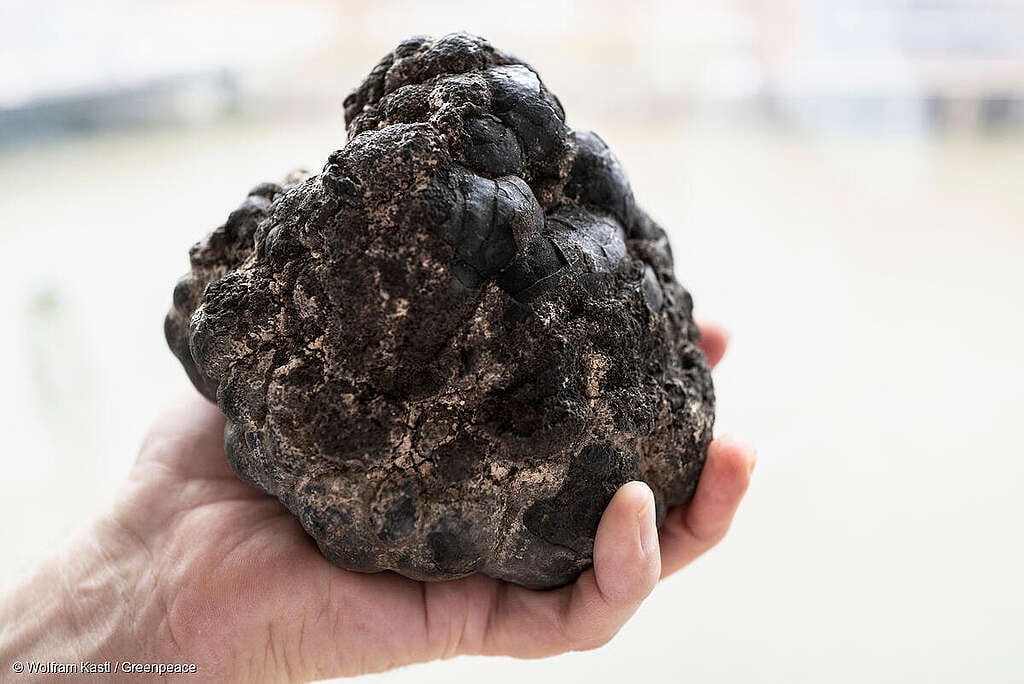
So, these little metallic lumps, which the wannabe deep sea miners have been metaphorically calling ‘batteries in a rock’ actually turned out to be just that – and they’re producing dark oxygen that could play a critical role in the deep ocean ecology.
The discovery of metallic nodules producing dark oxygen has been a huge surprise to science which could even require a new way of thinking about how life first began on planet Earth.
But it could also be the final straw in the case against deep sea mining. It could stop the industry before they begin.
The discovery was made in the Clarion-Clipperton Zone (CCZ), a huge flat area of the seafloor that stretches between Hawaii and Mexico, where mining companies like The Metals Company have plans to start harvesting these very same nodules that turn out to be producing all this dark oxygen.
These oxygen-producing nodules could be supporting a whole range of known and unknown deep sea lifeforms. Dark oxygen could be a critical factor in the deep sea ecosystem!
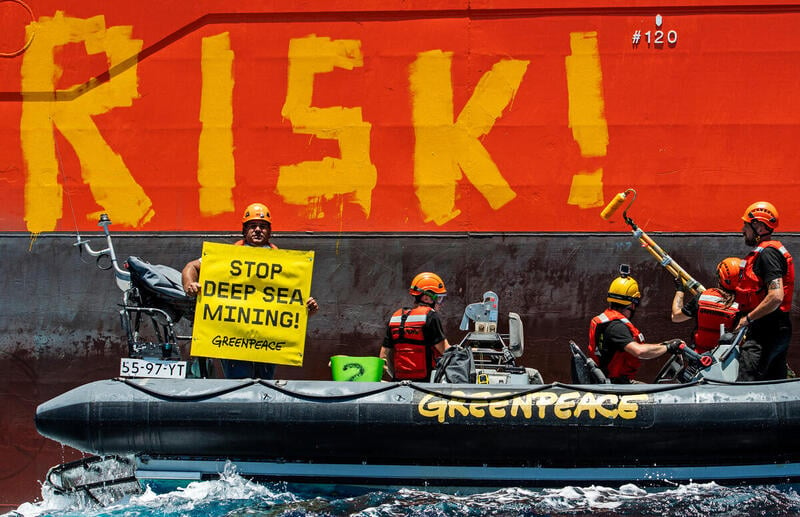
Greenpeace and others have long said that this new extractive mining industry should not be allowed to start in the very deep ocean because the life there is so little understood, and the ecosystems are fragile and potentially vital for the health of the ocean and all life on Earth.
This new discovery underlines the point.
The timing is good because world governments are meeting in Jamaica right now to decide the fate of this new mining industry. They’ll be deciding whether or not to allow deep sea miners like The Metals Company to go ahead with their plans to drop giant mining robots onto the seafloor to start harvesting these life-sustaining nodules.
Greenpeace is in Jamaica arguing strongly that deep sea mining should not be allowed to go ahead – especially now that we know the deep ocean is another source of oxygen that could be vital for the health of the ocean and all of us who depend on it.
In the climate and biodiversity crisis, we know that nature, in all its diversity, must be protected.

PETITION: Stop Deep Sea Mining
An emerging new industry could destroy this fragile and unique deep sea environment before we truly understand its importance.
Photo by Jong Marshes on Unsplash
For more information contact Deep Sea Defenders.
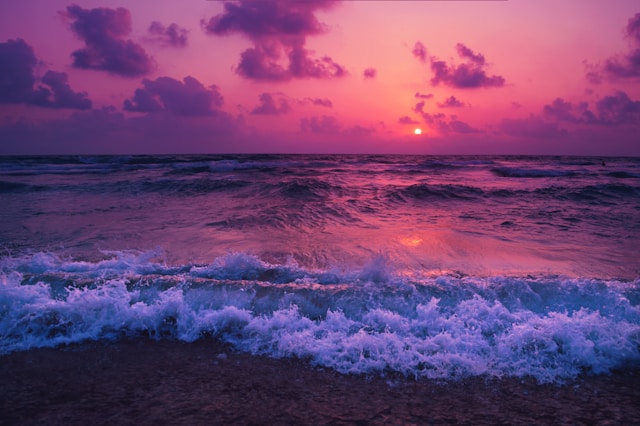
Editor’s note: Changing the face of a globalist, imperialist organization whose mandate is the equitable exploitation of “the common heritage of mankind” will not stop deep sea mining. We will need to stop the first attempt at enclosure and destruction of the sea floor, by any means necessary. Delegitimize, discredit and scuttle this operation. If you would like to help contact Deep Sea Defenders.
Brazilian oceanographer Leticia Carvalho will be the next secretary-general of the International Seabed Authority (ISA), the U.N.-mandated organization that oversees deep-sea mining activities in international waters. She won the election with 79 votes, while her predecessor, 64-year-old Michael Lodge, who served as the ISA’s secretary-general for two terms, received only 34 votes. Lodge has previously been accused of siding with mining companies, which went against the duty of the ISA secretariat to remain neutral and may have influenced the direction of the prospective deep-sea mining industry.
Carvalho previously told Mongabay that she would work to make the ISA more transparent and rebuild trust within the organization.
Brazilian oceanographer Leticia Carvalho has been named the next secretary-general of the International Seabed Authority (ISA) after winning an election that could change the course of the deep-sea mining industry.
Carvalho, 50, who currently works as an international civil servant for the United Nations Environment Programme (UNEP), was declared the winner of the race on Aug. 2, the last day of the twenty-ninth assembly meeting of the ISA. She won the election with 79 votes, while her predecessor, 64-year-old Michael Lodge, who served as the ISA’s secretary-general for two terms, received only 34 votes.
Carvalho will begin her term at the ISA, the U.N.-mandated organization that oversees deep-sea mining activities in international waters, in January 2025. She will be the first woman, the first oceanographer, and the first representative from Latin America to serve in this position.
Commercial-scale deep-sea mining has not yet begun anywhere in the world, but mining companies have been pushing for an imminent start of this activity — and Lodge has been accused of doing more than he should to help this process along.
During his time as secretary-general between 2016 and 2024, Lodge pushed for the finalization of a mining code, a set of rules that would allow deep-sea mining exploitation to begin. However, this code was not ultimately finished over his tenure. Lodge has also been accused of advocating for mining companies, which goes against the ISA secretariat’s duty of remaining neutral and keeping the ISA’s processes and procedures unnecessarily opaque. More recently, Lodge was also embroiled in allegations that he misused agency funds and that one of his supporters tried to bribe Carvalho to drop out of the election in exchange for another high-level position within the ISA. Lodge, however, has refuted all of these claims.
In a previous interview with Mongabay, Carvalho said that if elected, she would work to make the ISA more transparent and rebuild trust within the organization.
“For me, the mission of the ISA and the leadership of the ISA is to be a trustee — an honest broker that brings decision-makers together, offering space that belongs to the whole of humankind,” Carvalho told Mongabay in July. “It should offer transparency of its own procedures, on the decision-making processes, on the management of the budgets — all of this.”
One mining company, Canadian-based The Metals Company (TMC), has repeatedly expressed its intention to apply for an exploitation license later this year, even before the mining code is finished. However, Carvalho has said that she believes granting such a license before regulations are in place would be a “source of litigation.”
Advocates of deep-sea mining say seabed minerals are needed to fulfill metal shortages and provide materials for renewable energy technologies like electric car batteries. Yet critics say deep-sea minerals are unnecessary for such technologies and that deep-sea mining could irreparably damage the seabed and overall marine environment.

A recent study in Nature found that polymetallic nodules, metal-rich rocks found on the seafloor, produced a kind of “dark oxygen,” which experts say gives valid reason for slowing down the race to commercially extract nodules from the deep ocean.
During the recent ISA meetings, Austria, Guatemala, Honduras, Malta and Tuvalu joined a group of nations calling for a moratorium or precautionary pause on deep-sea mining. There are now 32 countries calling for such measures.
Matt Gianni, co-founder of the Deep Sea Conservation Coalition, a group of NGOs that campaign against deep-sea mining, said he was surprised by the number of country delegates that came to this year’s ISA meeting or sent in their proxy votes for the election, and also that “such a large majority” voted for Carvalho.
“This is a historic moment for the ISA and we congratulate Leticia Carvalho and the government of Brazil [for] her election,” Gianni said in a statement. “The ISA has an opportunity to champion a new way forward for sound ocean governance that prioritizes the precautionary principle and secures the health of the deep sea and its benefits for future generations.”
Elizabeth Claire Alberts is a senior staff writer for Mongabay’s Ocean Desk. Follow her on Twitter @ECAlberts.
Photo by Yousef Espanioly on Unsplash

Editor’s note: Humans have lived in balance with nature for millions of years. It was only in the last ten thousand years, with the advent of civilization, that humans have become unbalanced. If we continue on this course, we will reach our destination in less than a hundred years.
By Jan Ritch-Frel / CounterPunch
Discoveries in the fields of human origins, paleoanthropology, cognitive science, and behavioral biology have accelerated in the past few decades. We occasionally bump into news reports that new findings have revolutionary implications for how humanity lives today—but the information for the most part is still packed obscurely in the worlds of science and academia.
Some experts have tried to make the work more accessible, but Deborah Barsky’s new book, Human Prehistory: Exploring the Past to Understand the Future (Cambridge University Press, 2022), is one of the most authoritative yet. The breadth and synthesis of the work are impressive, and Barsky’s highly original analysis on the subject—from the beginnings of culture to how humanity began to be alienated from the natural world—keeps the reader engaged throughout.
Long before Jane Goodall began telling the world we would do well to study our evolutionary origins and genetic cousins, it was a well-established philosophical creed that things go better for humanity the more we try to know ourselves.
Barsky, a researcher at the Catalan Institute of Human Paleoecology and Social Evolution and associate professor at the Open University of Catalonia (UOC) and Rovira i Virgili University in Tarragona, Spain, who came to this field through her decades of studying ancient stone tool technologies, writes early in her book that lessons learned from the remote past could guide our species toward a brighter future, but “that so much of the information that is amassed by prehistoric archeologists remains inaccessible to many people” and “appears far removed from our daily lives.” I reached out to Barsky in the early stage of her book launch to learn more.
Jan Ritch-Frel: What would you suggest a person consider as they hold a 450,000-year-old handaxe for the first time?
Deborah Barsky: I think everyone feels a deep-seated reverence when touching or holding such an ancient tool. Handaxes in particular carry so many powerful implications, including on the symbolic level. You have to imagine that these tear-shaped tools—the ultimate symbol of the Acheulian—appeared in Africa some 1.75 million years ago and that our ancestors continued creating and re-creating this same shape from that point onwards for more than a million and a half years!
These tools are the first ones recognized as having been made in accordance with a planned mental image. And they have an aesthetic quality, in that they present both bilateral and bifacial symmetry. Some handaxes were made in precious or even visually pleasing rock matrices and were shaped with great care and dexterity according to techniques developed in the longest-enduring cultural norm known to humankind.
And yet, in spite of so many years of studying handaxes, we still understand little about what they were used for, how they were used, and, perhaps most importantly, whether or not they carry with them some kind of symbolic significance that escapes us. There is no doubt that the human capacity to communicate through symbolism has been hugely transformative for our species.
Today we live in a world totally dependent on shared symbolic thought processes, where such constructs as national identity, monetary value, religion, and tradition, for example, have become essential to our survival. Complex educational systems have been created to initiate our children into mastering these constructed realities, integrating them as fully as possible into this system to favor their survival within the masses of our globalized world. In the handaxe we can see the first manifestations of this adaptive choice: to invest in developing symbolic thought. That choice has led us into the digital revolution that contemporary society is now undergoing. Yet, where all of this will lead us remains uncertain.
JRF: Your book shows that it is more helpful to us if we consider the human story and evolution as less of a straight line and more so as one that branches in different ways across time and geography. How can we explain the past to ourselves in a clear and useful way to understand the present?
DB: One of the first things I tell my students is that in the field of human prehistory, one must grow accustomed to information that is in a constant state of flux, as it changes in pace with new discoveries that are being made on nearly a daily basis.
It is also important to recognize that the pieces composing the puzzle of the human story are fragmentary, so that information is constantly changing as we fill in the gaps and ameliorate our capacity to interpret it. Although we favor scientific interpretations in all cases, we cannot escape the fact that our ideas are shaped by our own historical context—a situation that has impeded correct explanations of the archeological record in the past.
One example of this is our knowledge of the human family that has grown exponentially in the last quarter of a century thanks to new discoveries being made throughout the world. Our own genus, Homo, for example, now includes at least five new species, discovered only in this interim.
Meanwhile, genetic studies are taking major steps in advancing the ways we study ancient humans, helping to establish reliable reconstructions of the (now very bushy) family tree, and concretizing the fact that over millions of years multiple hominin species shared the same territories. This situation continued up until the later Paleolithic, when our own species interacted and even reproduced together with other hominins, as in the case of our encounters with the Neandertals in Eurasia, for example.
While there is much conjecture about this situation, we actually know little about the nature of these encounters: whether they were peaceful or violent; whether different hominins transmitted their technological know-how, shared territorial resources together, or decimated one another, perhaps engendering the first warlike behaviors.
One thing is sure: Homo sapiens remains the last representative of this long line of hominin ancestors and now demonstrates unprecedented planetary domination. Is this a Darwinian success story? Or is it a one-way ticket to the sixth extinction event—the first to be caused by humans—as we move into the Anthropocene Epoch?
In my book, I try to communicate this knowledge to readers so that they can better understand how past events have shaped not only our physical beings but also our inner worlds and the symbolic worlds we share with each other. It is only if we can understand when and how these important events took place—actually identify the tendencies and put them into perspective for what they truly are—that we will finally be the masters of our own destiny. Then we will be able to make choices on the levels that really count—not only for ourselves but also for all life on the planet. Our technologies have undoubtedly alienated us from these realities, and it may be our destiny to continue to pursue life on digital and globalized levels. We can’t undo the present, but we can most certainly use this accumulated knowledge and technological capacity to create far more sustainable and “humane” lifeways.
JRF: How did you come to believe that stone toolmaking was the culprit for how we became alienated from the world we live in?
DB: My PhD research at Perpignan University in France was on the lithic assemblages from the Caune de l’Arago cave site in southern France, a site with numerous Acheulian habitation floors that have been dated to between 690,000 and 90,000 years ago. During the course of my doctoral research, I was given the exceptional opportunity to work on some older African and Eurasian sites. I began to actively collaborate in international and multidisciplinary teamwork (in the field and in the laboratory) and to study some of the oldest stone toolkits known to humankind in different areas of the world. This experience was an important turning point for me that subsequently shaped my career as I oriented my research more and more toward understanding these “first technologies.”
More recently, as a researcher at the Catalan Institute of Human Paleoecology and Social Evolution (IPHES-CERCA) in Tarragona, Spain, I continue to investigate the emergence of ancient human culture, in particular through the study of a number of major archeological sites attributed to the so-called “Oldowan” technocomplex (after the eponymous Olduvai Gorge Bed I sites in Tanzania). My teaching experience at the Open University of Catalonia (UOC) and Rovira i Virgili University (Tarragona) helped me to articulate my findings through discussions and to further my research with students and colleagues.
Such ancient tool kits, some of which date to more than 2 million years ago, were made by the hands of hominins who were very different from ourselves, in a world that was very distinct from our own. They provide a window of opportunity through which to observe some of the cognitive processes employed by the early humans who made and used them. As I expanded my research, I discovered the surprising complexity of ancient stone toolmaking, eventually concluding that it was at the root of a major behavioral bifurcation that would utterly alter the evolutionary pathways taken by humankind.
Early hominins recognizing the advantages provided by toolmaking made the unconscious choice to invest more heavily in it, even as they gained time for more inventiveness. Oldowan tool kits are poorly standardized and contain large pounding implements, alongside small sharp-edged flakes that were certainly useful, among other things, for obtaining viscera and meat resources from animals that were scavenged as hominins competed with other large carnivores present in the paleolandscapes in which they lived. As hominins began to expand their technological know-how, successful resourcing of such protein-rich food was ideal for feeding the developing and energy-expensive brain.
Meanwhile, increased leisure time fueled human inventiveness, and stone tool production—and its associated behaviors—grew ever more complex, eventually requiring relatively heavy investments into teaching these technologies to enable them to pass onwards into each successive generation. This, in turn, established the foundations for the highly beneficial process of cumulative learning that was later coupled with symbolic thought processes such as language that would ultimately favor our capacity for exponential development. This also had huge implications, for example, in terms of the first inklings of what we call “tradition”—ways to make and do things—that are indeed the very building blocks of culture. In addition, neuroscientific experiments undertaken to study the brain synapses involved during toolmaking processes show that at least some basic forms of language were likely needed in order to communicate the technologies required to manufacture the more complex tools of the Acheulian (for example, handaxes).
Moreover, researchers have demonstrated that the areas of the brain activated during toolmaking are the same as those employed during abstract thought processes, including language and volumetric planning. I think that it is clear from this that the Oldowan can be seen as the start of a process that would eventually lead to the massive technosocial database that humanity now embraces and that continues to expand ever further in each successive generation, in a spiral of exponential technological and social creativity.
JRF: Did something indicate to you at the outset of your career that archeology and the study of human origins have a vital message for humanity now? You describe a conceptual process in your book whereby through studying our past, humanity can learn to “build up more viable and durable structural entities and behaviors in harmony with the environment and innocuous to other life forms.”
DB: I think most people who pursue a career in archeology do so because they feel passionate about exploring the human story in a tangible, scientific way. The first step, described in the introductory chapters of my book, is choosing from an ever-widening array of disciplines that contribute to the field today. From the onset, I was fascinated by the emergence and subsequent transformation of early technologies into culture. The first 3 million years of the human archeological record are almost exclusively represented by stone tools. These stone artifacts are complemented by other kinds of tools—especially in the later periods of the Paleolithic when bone, antler, and ivory artifacts were common—alongside art and relatively clear habitational structures.
It is one thing to analyze a given set of stone tools made by long-extinct hominin cousins and quite another to ask what their transposed significance to contemporary society might be.
As I began to explore these questions more profoundly, numerous concrete applications did finally come to the fore, thus underpinning how data obtained from the prehistoric register is applicable when considering issues such as racism, climate change, and social inequality that plague the modern globalized world.
In my opinion, the invention and subsequent development of technology was the inflection point from which humanity was to diverge towards an alternative pathway from all other life forms on Earth. We now hold the responsibility to wield this power in ways that will be beneficial and sustainable to all life.
This article was produced by the Independent Media Institute.
Jan Ritch-Frel is the executive director of the Independent Media Institute.
Photo by Bruno Martins on Unsplash